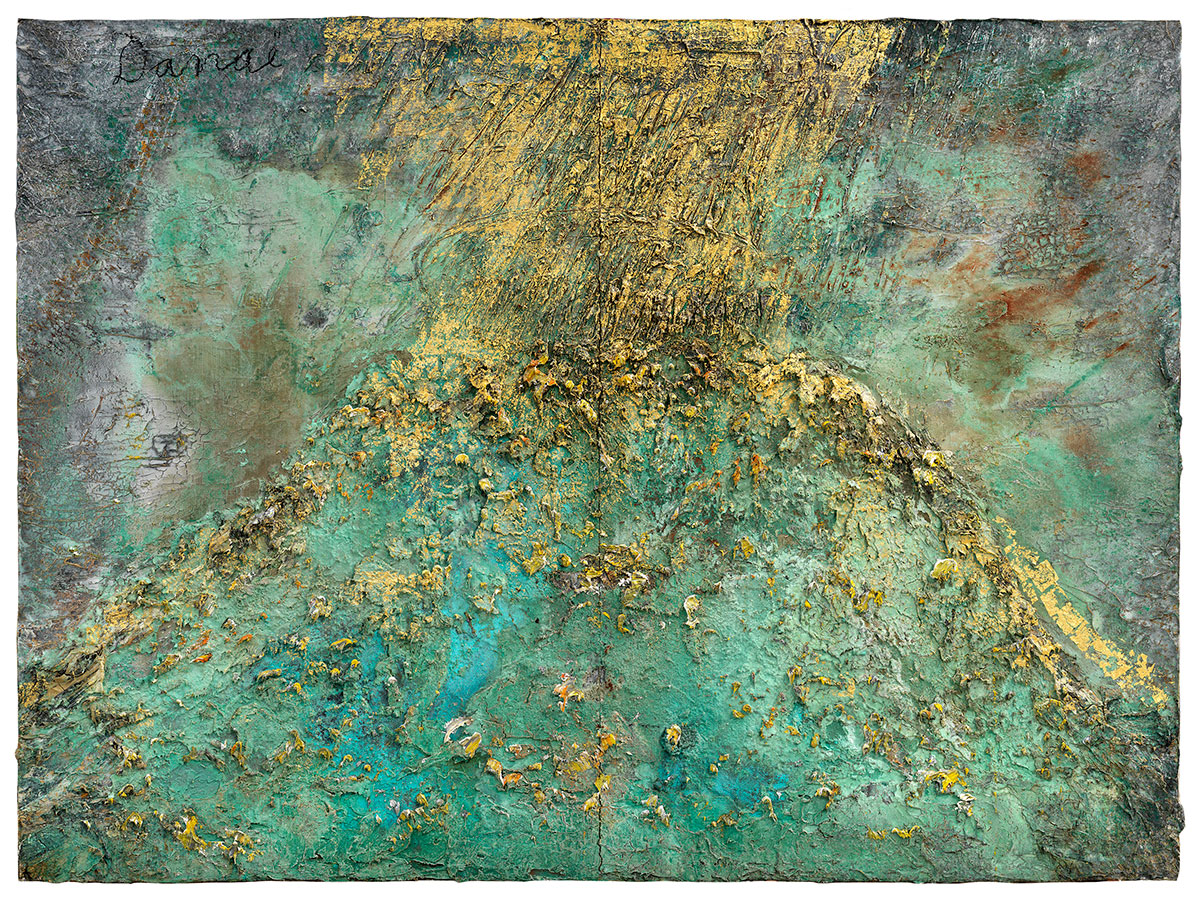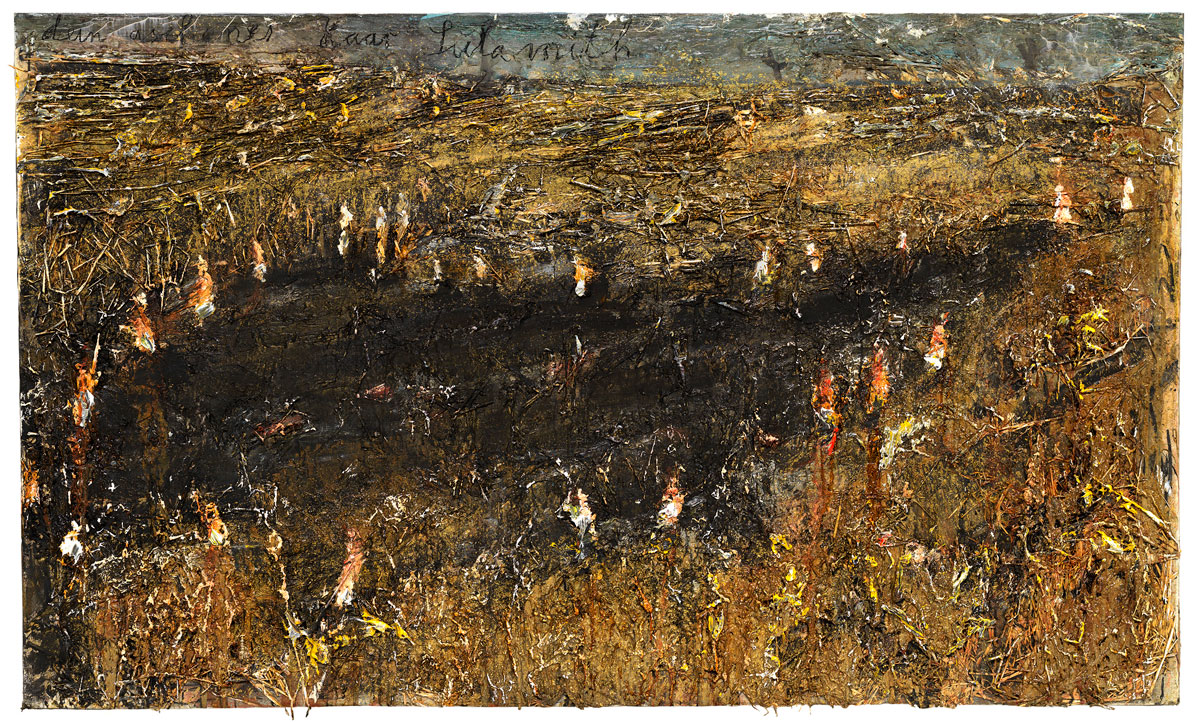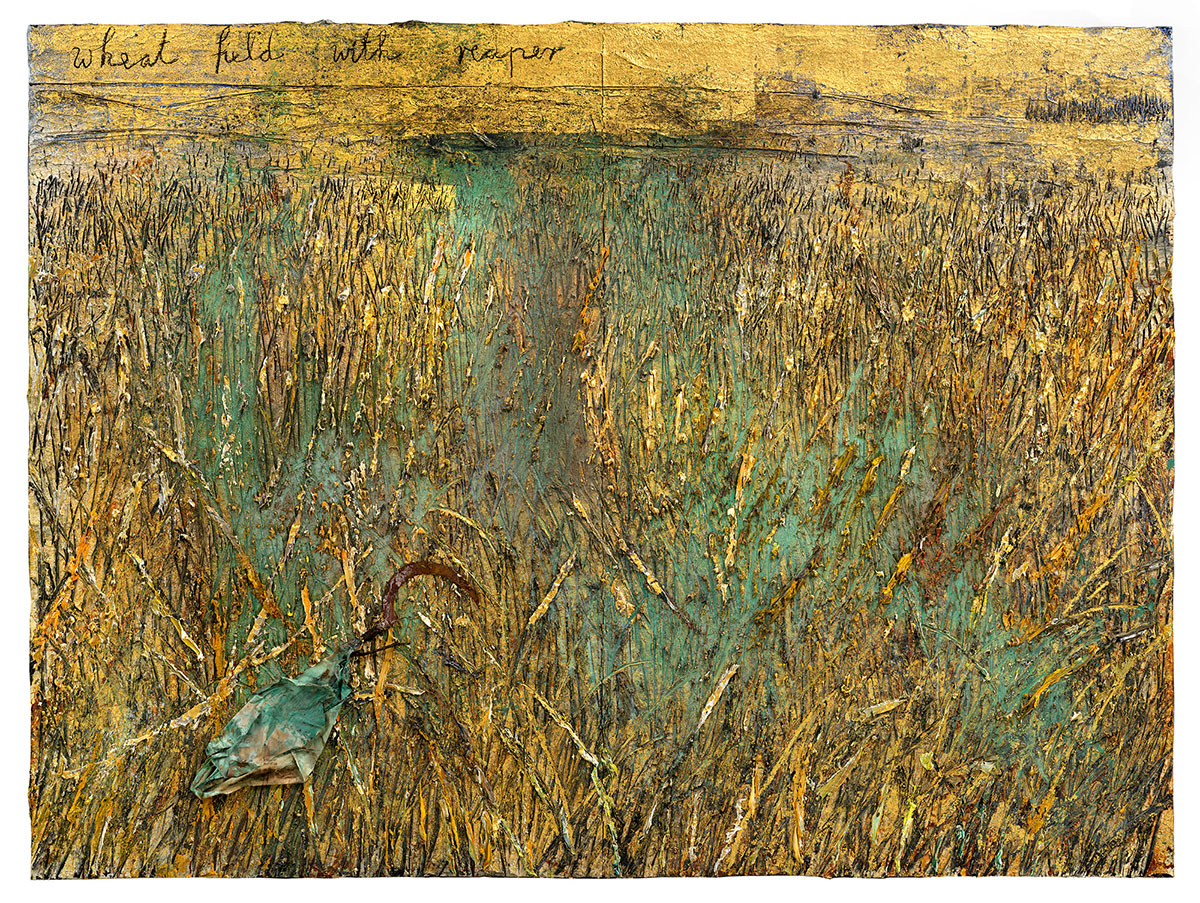PREVIEW: Anselm Kiefer-Hortus Conclusus
 The language of material plays an essential role in the work of Anselm Kiefer, most of whose pictures have a geological sedimentary texture. For the past forty years, his work has been developing in a process of accumulation, mingling and reworking of themes, motifs and constellations which recur and overlap repeatedly in diverse media. Highly symbolic connections emerge from lead, concrete, dried plants, glass, barbed wire and other heterogeneous materials.
The language of material plays an essential role in the work of Anselm Kiefer, most of whose pictures have a geological sedimentary texture. For the past forty years, his work has been developing in a process of accumulation, mingling and reworking of themes, motifs and constellations which recur and overlap repeatedly in diverse media. Highly symbolic connections emerge from lead, concrete, dried plants, glass, barbed wire and other heterogeneous materials.
By Efi Michalarou
Photo: Gagosian Archive
Born two months before the end of World War II, Anselm Kiefer has built an allegoric oeuvre while drawing on the great Germanic myths. He is a German artist “of the second generation” as it is called, which has known neither the war nor the Shoah—a veritable amnesia of history that he was unable to address in his immediate environment. Anselm Kiefer’s work has always taken on a monumental scale—the scale of Germany as terrain of ruins; the scale of this property nestled in the Cévennes. “I have often compared my studios to laboratories. But one can also picture them as refineries or mines,” he explains. Anselm Kiefer in his solo exhibition “hortus conclusus”, emphasizes the allegorical aspects of landscape with the exhibition title, which is Latin for “enclosed garden” and derived from a book of the Hebrew Bible known as the Song of Songs or Song of Solomon. In Medieval and Renaissance Europe, the term described the iconography of the Virgin Mary depicted in a walled garden, a sheltered place for meditation. For Kiefer, the idea of hortus conclusus offers a view of nature that is both sublime and idyllic, thematizing growth, renewal, and the cycles of life. As with the traditions of East Asian painting, his landscapes move beyond direct representation to convey responses to the forms and forces of nature, expressed in both art and poetry. Central to his practice from the 1970s to the present, Kiefer’s landscapes are rooted in the symbolism of creation and destruction, history and memory. The canvases on view in Hong Kong envelop the viewer with rich colors and thick layers of paint, straw, and other materials, and include inscribed allusions to poetry and mythology. While some paintings represent land that has been burnt or barren, others envision lush growth and seasonal transformation. The exhibition’s earliest work is “Dein aschenes Haar, Sulamith” (1981). Alluding to the poetry of Paul Celan, this painting suggests scorched earth and ashen terrain. The most recent painting, “Wer jetzt kein Haus hat, baut sich keines mehr” (2022), is an autumn landscape that depicts a tree among fallen leaves. Inspired by verses by Rainer Maria Rilke, it meditates on themes of transience, resilience, and natural beauty. Rather than depict a naturalistic scene, “Danaë” (2014) evokes elemental metamorphosis, with gold leaf and verdant greens derived from the sediment of a copper solution transformed through chemical electrolysis. This unique material is also prominent in” Waldsteig, Für Adalbert Stifter” (2013–19), which includes a book made of lead, a recurring motif and material for Kiefer. Here, abundant vines and flowers reinforce the work’s dedication to a nineteenth-century Austrian writer renowned for vivid descriptions of nature. “Wheat field with reaper” (2014) pays homage to Vincent van Gogh, whose life and paintings are a touchstone for Kiefer. Its composition refers to his predecessor’s final masterpiece, “Wheatfield with Crows” (1890), with its densely textured surface, diverging paths, and high, inaccessible horizon line. Like Van Gogh, Kiefer emphasizes the expressive potentials of landscape painting, encompassing aspects of both natural forces and the human condition through his engagement with the hortus conclusus tradition.
Photo: Anselm Kiefer, Danaë, 2014, Emulsion, oil, acrylic, charcoal, gold leaf, and sediment of electrolysis on canvas, 110 1/4 x 149 5/8 inches (280 x 380 cm), © Anselm Kiefer, Photo: Georges Poncet, Courtesy the artist and Gagosian
Info: Gagosian Gallery, 7/F Pedder Building, 12 Pedder Street, Central, Hong Kong, Duration: 17/5-5/8/2023, Days & Hours: Tue-Sat 11:00-19:00, https://gagosian.com/


